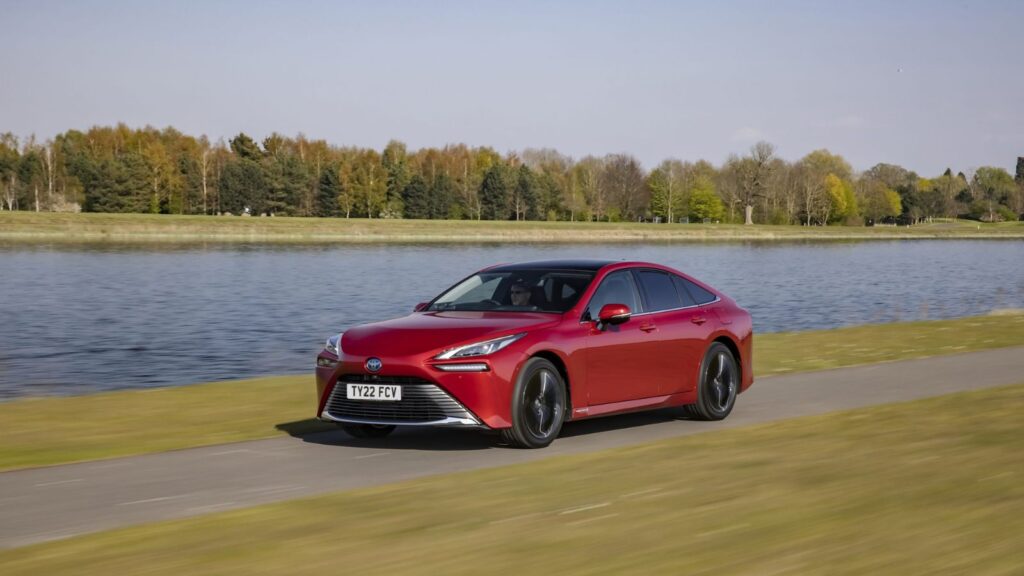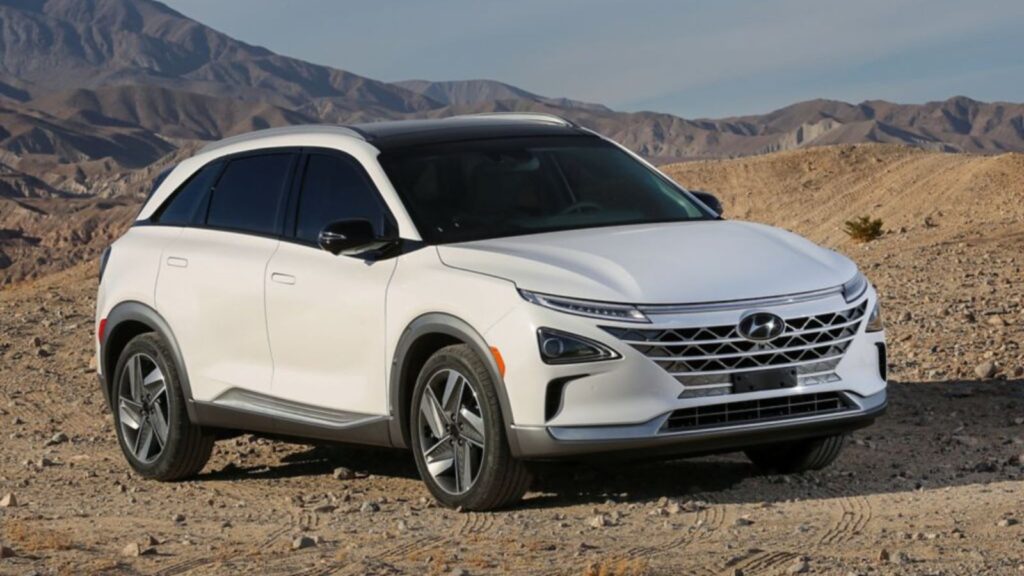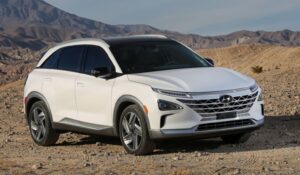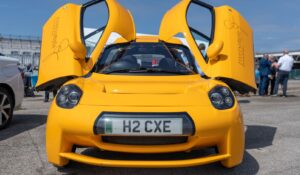Can I buy a hydrogen car? The definitive list of hydrogen cars for sale in 2025

Hydrogen cars. Are they a pipe dream or a reality? The ‘cult of batteries’ might have you believe the former.
But while many have been busy debating, the engineers tucked away in the skunkworks of the world’s major manufacturers have quietly been getting the job done.
Hydrogen cars (or more broadly, hydrogen vehicles) aren’t new. In fact, the technology can trace its origins back over a century.
If there was a nationwide refuelling network, would you buy a hydrogen car?
Despite the futuristic aura (after all, hydrogen fuel cells did power the auxiliary systems on space missions) the first working fuel cell was actually invented by a Welshman, Sir William Grove, way back in the mid-19th century.
From the lab bench to the launch pad, hydrogen has a surprisingly long and storied history.
A brief history of hydrogen cars
The first hydrogen concept car dates back further than you might think. In 1966 General Motors created the “Electrovan” – often considered the first hydrogen fuel cell vehicle.
It ran on cryogenically cooled liquid hydrogen and oxygen stored in massive tanks that occupied nearly all its cargo space. Not particularly practical.
While it never went into production, it proved that hydrogen could be used to power a road-going vehicle.

Since then, many manufacturers – BMW, Toyota, Honda, Mercedes-Benz, Jaguar Land Rover, Hyundai, and more – have experimented with hydrogen technology.
Early prototypes were bulky, expensive, and faced severe practical challenges, not least of which was finding hydrogen refuelling infrastructure.
But the underlying appeal remained: a sustainable, eco-friendly vehicle that emits only water vapour and can be refuelled in minutes.
Why are hydrogen cars gaining popularity now?
Fast forward to 2024/2025, and the automotive landscape is shifting under the weight of net-zero targets, impending bans on new petrol and diesel sales, and growing consumer awareness of sustainability.
Hydrogen is no longer forced to compete solely with the entrenched might of big oil; instead, it’s emerging as a complementary alternative to battery-electric technology.
While batteries have made massive strides due to the consumer electronics in everybody’s pockets, they still face limitations in charging times, raw material sourcing, recycling, weight, and range for certain applications.
Hydrogen fuel cell electric vehicles (FCEVs) generate their own electricity on-demand from compressed hydrogen gas.
The result? Quick refuelling, long-range, and zero harmful tailpipe emissions.
The infrastructure is still limited, and costs remain somewhat high, but the once far-off vision of hydrogen-powered cars is steadily taking shape as a tangible reality.
So, which hydrogen cars are for sale right now?
We’ve compiled the definitive list of hydrogen-powered cars currently for sale right now.
While availability often depends on refuelling infrastructure, these models prove hydrogen cars are not science projects – they’re here, they’re drivable, and you can own or lease one today (in the right places).
Toyota Mirai
Markets: U.S. (primarily California), Canada (limited), UK, select European countries (Germany, Denmark, UK), and Japan.
Introduction:
Kicking things off is the Toyota Mirai. Launched in 2014 and originally based on the Prius, it was one of the first mass-produced hydrogen cars to go on sale.
It helped define the modern hydrogen segment, showing that a sophisticated saloon car could run quietly, cleanly, and with a range comparable to petrol and diesel cars.
The second-generation Mirai (introduced around 2020), was this time based on the Lexus LS platform, featuring a more luxurious design, improved handling, and a sleeker exterior – a true sign of Toyota’s long-term bet on hydrogen.
How much does the Toyota Mirai cost?
In the UK: £64,695.00 (Incl. VAT)
In the USA: $52,000
In Europe: €60,000
Incentives:
Toyota has historically offered generous hydrogen fuel credits with the purchase or lease of a Mirai, in California coming in at around USD $15,000 worth of fuel over a three-year period.
Key stats:
- Power: 182 hp (135 kW)
- Torque: 221 lb-ft (300 Nm)
- Range: up to 400 miles (645 km)
- Refuelling time: Around 5 minutes
Notable features:
Hyundai NEXO
Markets: U.S. (California), Canada (limited), select European countries (Germany, UK, Norway), and South Korea.
Introduction:
Hyundai was one of the early adopters of hydrogen technology, with the Nexo building on the lessons learned from the limited original “Tucson Fuel Cell”.
This crossover SUV brings practicality, a spacious cabin, and cutting-edge driver-assistance features. The Nexo is Hyundai’s statement that hydrogen can seamlessly blend into a family’s lifestyle while delivering zero-emission driving.
How much does the Hyundai NEXO cost?
In the UK: £68,856
In the USA: $62,000
In Europe: €69,000
Key stats:
- Power: ~161 hp (120 kW)
- Torque: ~291 lb-ft (395 Nm)
- Range: Up to ~380 miles (612 km)
- Refuelling time: About 5 minutes
Notable features:
Honda CR-V e:FCEV (Arriving in 2025)
Markets: U.S. initially (California and possibly select hydrogen-friendly regions)
Introduction:
Honda is returning to the hydrogen scene after the discontinuation of its Clarity Fuel Cell. The Honda CR-V Fuel Cell, set for release in 2025, leverages the versatility of its popular SUV platform and marries it with a next-generation hydrogen powertrain.
Notably, Honda plans to add plug-in functionality, allowing the CR-V to run as a battery-electric vehicle for shorter trips and switch to hydrogen fuel cell mode for extended range.
This dual approach could bridge the gap between pure EVs and FCEVs, making it an intriguing option for buyers who value flexibility and rapid refuelling.
How much does the Honda CR-V hydrogen cost?
In the USA: $51,350
Key stats (estimated):
- Power: ~150-180 hp (exact figures TBC)
- Range: Similar to other FCEVs (~350-400 miles expected)
- Refuelling time: Around 5 minutes
Notable features:
Riversimple Rasa
Markets: Limited availability, centred around pilot leasing schemes in Wales (UK).
Introduction:
The Riversimple Rasa is a unique entry in the hydrogen world. This lightweight two-seater is designed for maximum efficiency and minimal environmental impact.
While you can’t just walk into a dealership and buy one outright, Riversimple leases the Rasa to customers living close to its refuelling network. The lease is also an incredibly cheap ‘all bills included’ model covering maintenance, tax, insurance, etc.
It’s more of a local mobility solution than a mass-market product (yet – watch this space), but it shows how small innovators are approaching hydrogen from a different angle.
Key stats:
- Power: Approximately 8.5 kW electric motor (very lightweight vehicle)
- Range: Around 300 miles (483 km)
- Refuelling time: A few minutes at the dedicated station
Notable features:
Beyond passenger cars, hydrogen fuel cell (and hydrogen internal combustion engine) technology is also making headway in commercial fleets, including vans, trucks, and buses, where rapid refuelling and long-range capabilities can be critical advantages.
Where can you refuel a hydrogen car?
Hydrogen infrastructure, although growing, is unfortunately still limited. The current networks are strongest in a few areas:
Europe:
Germany leads the charge with a growing number of H2 stations, followed by the UK, Denmark, and the Netherlands. France, Norway, and others are catching up as part of EU-level hydrogen strategies.
Find your nearest hydrogen filling station here.
US & Canada:
California boasts the most developed hydrogen network in North America, with a cluster of stations across the state. Canada’s network is sparser, though Vancouver and Quebec are making headway.
Find your nearest hydrogen filling station in the US & Canada here.
In Asia, Japan and South Korea have made significant strides, with well-developed hydrogen refuelling networks that support not only passenger cars but also a growing number of commercial and industrial vehicles.
Sign up to the Driving Hydrogen newsletter to hear all the latest news from the world of hydrogen moblility.





































